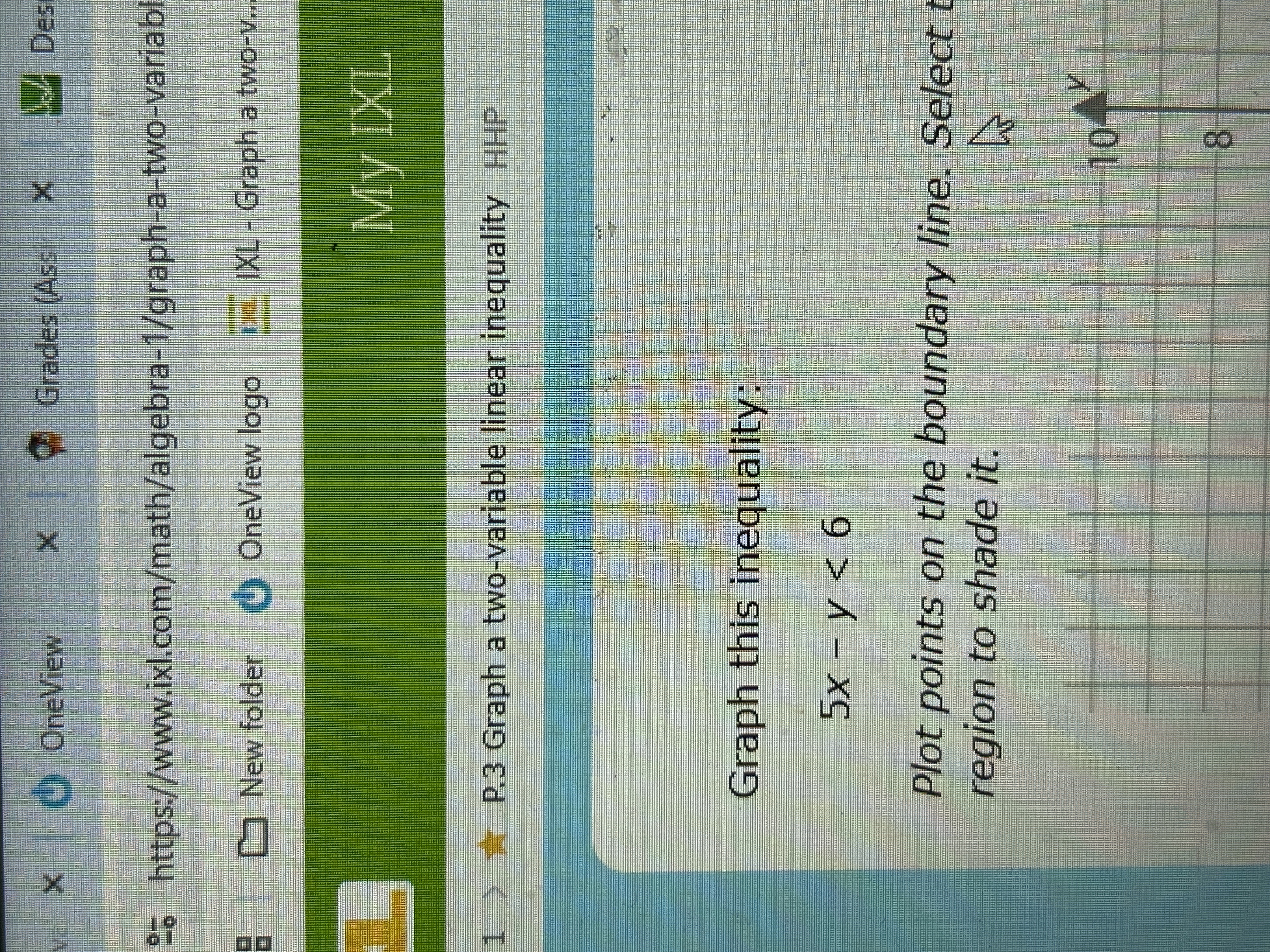Graph this inequality: 5x - y < 6. Plot points on the boundary line. Select the region to shade it.

Understand the Problem
The question is asking us to graph the linear inequality 5x - y < 6. We need to identify the boundary line and then determine which region to shade according to the inequality.
Answer
The graph of the inequality \( 5x - y < 6 \) features a dashed line along \( y = 5x - 6 \) with the region above the line shaded.
Answer for screen readers
The graph of the inequality ( 5x - y < 6 ) shows a dashed line for the boundary ( y = 5x - 6 ) with the region above the line shaded.
Steps to Solve
- Rewrite the inequality in slope-intercept form
Start by isolating ( y ) in the inequality ( 5x - y < 6 ):
$$ -y < -5x + 6 $$
Now, multiply by -1 (remember to flip the inequality):
$$ y > 5x - 6 $$
- Identify the boundary line
The boundary line for the inequality can be found by replacing the inequality symbol with an equals sign:
$$ y = 5x - 6 $$
- Plot points for the boundary line
Choose a couple of ( x ) values to find corresponding ( y ) values:
-
For ( x = 0 ):
$$ y = 5(0) - 6 = -6 $$
Point: ( (0, -6) )
-
For ( x = 2 ):
$$ y = 5(2) - 6 = 4 $$
Point: ( (2, 4) )
- Draw the boundary line
Plot the points ( (0, -6) ) and ( (2, 4) ) on a graph and connect them with a dashed line since the inequality is strict (( > )).
- Select the region to shade
To determine which side of the line to shade, pick a test point not on the line (commonly ( (0, 0) )). Substitute into the original inequality:
$$ 5(0) - 0 < 6 $$
This simplifies to ( 0 < 6 ), which is true. Therefore, shade the region that includes the point ( (0, 0) ).
The graph of the inequality ( 5x - y < 6 ) shows a dashed line for the boundary ( y = 5x - 6 ) with the region above the line shaded.
More Information
This inequality represents a half-plane above the line, indicating all combinations of ( x ) and ( y ) values that satisfy the condition ( 5x - y < 6 ). The use of a dashed line signifies that points on the line itself are not included in the solution set.
Tips
- Forgetting to flip the inequality sign when multiplying or dividing by a negative number.
- Not using a dashed line for strict inequalities (i.e., ( < ) or ( > )).
- Shading the wrong region by not testing the correct point.
AI-generated content may contain errors. Please verify critical information